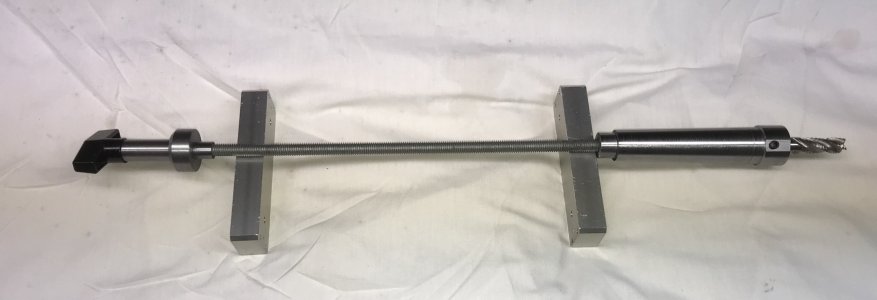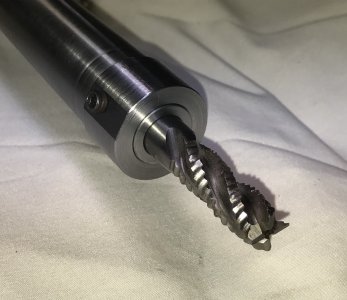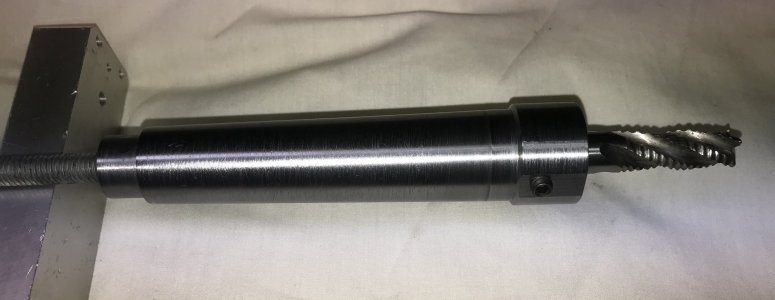- Joined
- Feb 4, 2021
- Messages
- 172
Morning,
I am working toward turning an end mill holder for my Burke No. 4, and needed some help on the order of operations.
My intent is to turn the final taper between centers, but cannot drill the drawbar hole or end mill hole while in the arrangement. My thought was to:
- Mount and indicate the stock (1-1/2 x 6) in a four jaw,
- Support the stock with a steady rest
- Drill half way through the stock with a piolet bit
- Bore out the end mill recess
- Cut a 30 degree edge on the bored hole to later receive a live center
- Flip the stock
- Reindicate it in the four jaw and steady rest
- Finish the through pilot hole
- Drill and thread the new end for a draw bar
- Cut a 30 degree edge on the threaded hole.
- Mount the part between centers, and complete the taper
When I flip the part, will I lose concentricity of the end mill recess? One thought I had was to glue in a plug. after I bore the end mill recess and drill a formal center in the plug. Later I could heat the part, and pull the plug out.
Please share your thoughts and insight!
Thanks,
Greg
I am working toward turning an end mill holder for my Burke No. 4, and needed some help on the order of operations.
My intent is to turn the final taper between centers, but cannot drill the drawbar hole or end mill hole while in the arrangement. My thought was to:
- Mount and indicate the stock (1-1/2 x 6) in a four jaw,
- Support the stock with a steady rest
- Drill half way through the stock with a piolet bit
- Bore out the end mill recess
- Cut a 30 degree edge on the bored hole to later receive a live center
- Flip the stock
- Reindicate it in the four jaw and steady rest
- Finish the through pilot hole
- Drill and thread the new end for a draw bar
- Cut a 30 degree edge on the threaded hole.
- Mount the part between centers, and complete the taper
When I flip the part, will I lose concentricity of the end mill recess? One thought I had was to glue in a plug. after I bore the end mill recess and drill a formal center in the plug. Later I could heat the part, and pull the plug out.
Please share your thoughts and insight!
Thanks,
Greg




